An Internet search turns up an astounding number of pages about radiation from Japan’s Fukushima Daiichi nuclear power plant meltdown that followed an earthquake and tsunami in March 2011. But it’s difficult to find credible information.
One reason is that government monitoring of radiation and its effects on fish stocks appears to be limited. According to the Woods Hole Oceanographic Institution:
[quote]No U.S. government or international agency is monitoring the spread of low levels of radiation from Fukushima along the West Coast of North America and around the Hawaiian Islands.[/quote]
The U.S. Food and Drug Administration’s most recent food testing, which includes seafood, appears to be from June 2012. Its website states, “FDA has no evidence that radionuclides from the Fukushima incident are present in the U.S. food supply at levels that would pose a public health concern. This is true for both FDA-regulated food products imported from Japan and U.S. domestic food products, including seafood caught off the coast of the United States.”
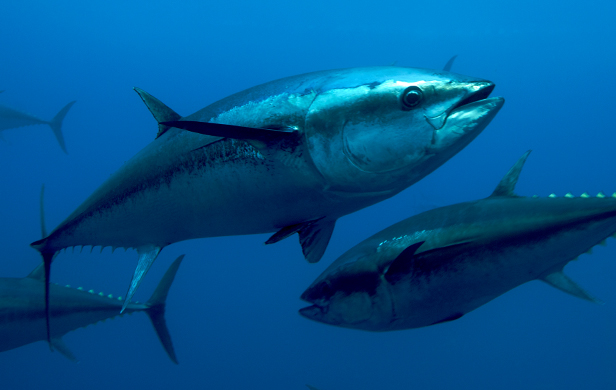
The non-profit Canadian Highly Migratory Species Foundation has been monitoring Pacific troll-caught albacore tuna off the B.C. coast. Its 2013 sampling found “no residues detected at the lowest detection limits achievable.” The B.C. Centre for Disease Control website assures us we have little cause for concern about radiation from Japan in our food and environment. Websites for Health Canada and the Canadian Food Inspection Agency yield scant information.
Not out of the woods yet
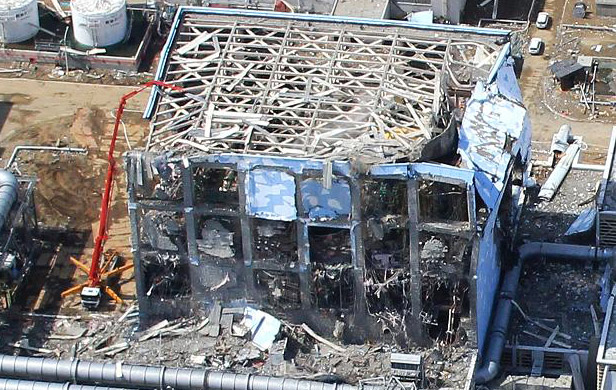
But the disaster isn’t over. Despite the Japanese government’s claim that everything is under control, concerns have been raised about the delicate process of removing more than 1,500 nuclear fuel rod sets, each containing 60 to 80 fuel rods with a total of about 400 tonnes of uranium, from Reactor 4 to a safer location, which is expected to take a year. Some, including me, have speculated another major earthquake could spark a new disaster. And Reactors 1, 2 and 3 still have tonnes of molten radioactive fuel that must be cooled with a constant flow of water.
A radioactive plume is expected to reach the West Coast sometime this year, but experts say it will be diluted by currents off Japan’s east coast and, according to the Live Science website:
[quote]The majority of the cesium-137 will remain in the North Pacific gyre – a region of ocean that circulates slowly clockwise and has trapped debris in its center to form the ‘Great Pacific Garbage Patch’ – and continue to be diluted for approximately a decade following the initial Fukushima release in 2011.[/quote]
Oceanographic Institution calls for public’s help
With the lack of data from government, the Woods Hole Oceanographic Institution is asking the public for help. In January, Ken Buesseler, senior scientist and director of the Center for Marine and Environmental Radioactivity at the U.S.-based non-profit, launched a fundraising campaign and citizen science website to collect and analyze seawater along North America’s West Coast.
“Whether you agree with predictions that levels of radiation along the Pacific Coast of North America will be too low to be of human health concern or to impact fisheries and marine life, we can all agree that radiation should be monitored, and we are asking for your help to make that happen,” Buesseler said in a news release.
British Columbians can submit coastal water samples
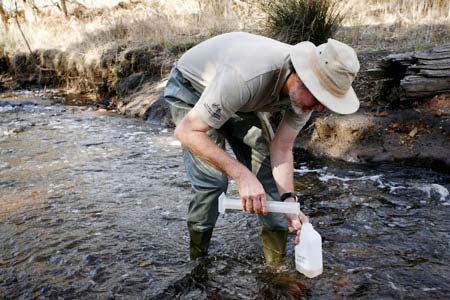 Participants can help fund and propose new sites for seawater sampling, and collect seawater to ship to the lab for analysis. The David Suzuki Foundation is the point group for two sampling sites, on Haida Gwaii and at Bamfield on the west coast of Vancouver Island. Data will be published at How Radioactive Is Our Ocean?, and will include an evolving map showing cesium concentrations with links to information about radioactivity in the ocean and what the levels mean.
Participants can help fund and propose new sites for seawater sampling, and collect seawater to ship to the lab for analysis. The David Suzuki Foundation is the point group for two sampling sites, on Haida Gwaii and at Bamfield on the west coast of Vancouver Island. Data will be published at How Radioactive Is Our Ocean?, and will include an evolving map showing cesium concentrations with links to information about radioactivity in the ocean and what the levels mean.
The oceans contain naturally occurring radioactive isotopes and radiation from 1960s nuclear testing. Buesseler doesn’t think levels in the ocean or seafood will become dangerously high because of the Fukushima disaster, but he stresses the importance of monitoring.
The Fukushima disaster was a wake-up call for the potential dangers of nuclear power plants, especially in unstable areas. North Americans may have little cause for concern for now, but without good scientific information to determine whether or not it is affecting our food and environment we can’t know for sure. The Woods Hole initiative is a good start.
With contributions from David Suzuki Foundation Senior Editor Ian Hanington.
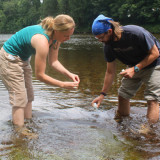

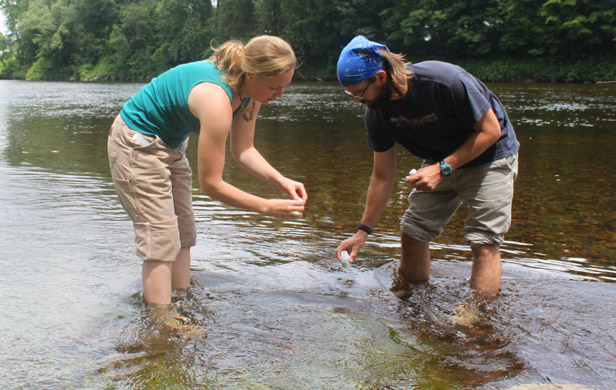
While I applaud the call for constant monitoring of radiation levels in the pacific northwest by either volunteers or gov’t agencies.
I cant help but notice Mr Suzuki’s alarmist statement of a few months ago at a University of Calgary speaking engagement has been toned down somewhat.
And I quote Mr. Suzuki, ” I have read a paper that says if there is another earthquake in Japan that causes reactor #4 and the fuel rods to be affected, Japan and the entire west coast of North America will be toast…….”
The author of the paper that Mr Suzuki referred to( a professor in France) was quoted in a local Vancouver newspaper in January 2014 as being somewhat confused as to Mr Suzuki’s alarmist statements. Her predictions of another earthquake and tsunami affecting reactor #4 and the spent rods were nowhere near as dire.
While no one obviously wants to see another earthquake and tsunami cause even more destruction to both Japan and the borderless Pacific ocean.
To expect Japan to move 1500 highly lethal radioactive fuel rods which also require constant cooling from an area that is contaminated by radiation……This is a logistical nightmare. One can only imagine how the Canadian gov’t would handle the same situation. Gov’t agency upon gov’t agency would waste years and millions of dollars discussing the obvious….all while doing nothing.
And it isn’t just Japan that has built nuclear reactors along the ocean in an earthquake zone.
Google Pt Lepreau reactor in New Brunswick for a lesson in gov’t hubris and stupidity.
Perhaps Mr Suzuki’s anti nuclear efforts would be better focused on solutions to assist Japan in its monumental clean up burden rather that criticisms. With all his contacts I’m sure the solutions would be innovative and interesting.
I will be sailing in Dixon Entrance and into Alaskan South-Ease waters this May and June. I would be please to be able to provide samples of the waters we traverse.
This quote is untrue.
“The majority of the cesium-137 will remain in the North Pacific gyre – a region of ocean that circulates slowly clockwise and has trapped debris in its center to form the ‘Great Pacific Garbage Patch’ – and continue to be diluted for approximately a decade following the initial Fukushima release in 2011.”
This quote does not take into consideration that the Pacific Gyre is not a static thing. It is teaming with wild life and the wild life ingests the plastic and now they will be ingesting radioactive plastic and crawling up on or flying to beaches to die from both the plastic and more and more concentrated radiation.
“And Reactors 1, 2 and 3 still have tonnes of molten radioactive fuel that must be cooled with a constant flow of water.”
It isn’t molten. If left uncooled, it may melt… but it isn’t molten, and it is inflammatory to say so.
Really untrue. The pacific gyre traps stuff THAT FLOATS.
Japan’s Public Broadcaster Faces Accusations of Shift to the Right
JAN. 31, 2014 New York Times
TOKYO — Still more public criticism came Thursday, when a longtime commentator on economic affairs angrily announced that he had resigned after being told NOT to criticize nuclear power ahead of a crucial election for Tokyo governor.
On Thursday, an economics professor said he had severed ties with an Japan’s public broadcaster radio show on which he had appeared regularly for 20 years after Japan’s public broadcaster told him NOT to say anything critical of nuclear power to avoid possibly swaying a coming election for Tokyo governor. An Japan’s public broadcaster spokesman said the demand was made to ensure balanced coverage during the election for Tokyo governor.
Japan’s public broadcaster is scared of being criticized as antinuclear. Japan’s public broadcaster has become a place where it is hard to speak out against Japan’s government. This is unhealthy for democracy.